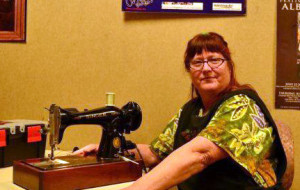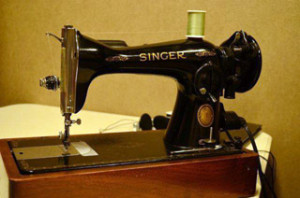An interview with OSW Costumer Anna Constantz

How long have you been doing costumes for Opera Southwest?
I’ve worked as OSW’s costumer continuously since 1994, but my first show was as a stitcher in 1977.
Where else do you work as a costumer, besides Opera Southwest?
I spend every spring at the Spoleto Festival in Charleston, SC, and my involvement there dates back to 1983. I also have done costumes for Center Stage in Baltimore, Alliance Theatre in Atlanta and for Pensacola Opera.
So, where do the costumes come from? Do you build them new for each show or do they come from stock?
Actually, costumes for most productions Opera Southwest has done recently are rented from other theaters or major costume providers. Even so, there are always about half a dozen costumes that have to be either built from scratch or pulled from our costume stock. Rental costumes are also not always complete – they may be missing shoes or suspenders or something like that. Ultimately, I’m trying to achieve the look the director is asking me for.
Walk me through a typical show.
The rental costumes arrive on a truck around the same time the singers do – 3 weeks or so before opening. After they are unloaded, I make sure they are all there, and then I start the process of fitting costumes. Even though the rental house sometimes makes preliminary adjustments based on the measurements we send them, there are always discrepancies, and costumes have to be adjusted. Just to fit and pin a costume (not to perform the actual sewing alteration) takes between 30 minutes and an hour – per costume – on a show like Madama Butterfly that process alone can take around 40 hours.
Then, once everything has been adjusted and fitted, we have to run the show – these costumes are complicated, and the singers need help getting in and out of them, especially if they have a quick change. In larger companies, building costumes and dressing are separate jobs. Part of what I like about Opera Southwest, even though it can get crazy, is being able to see the process all the way through, from start to finish.
Then, once a show is over, I have to put everything back the way it was when it arrived – undoing all my adjustments.
So there’s a huge amount of unseen work even after the curtain goes down.
No doubt about it.
Tell me about that machine you have there – it looks old fashioned!

This is an old Singer canvas stitcher, about sixty years old. It was originally sold as “portable” but it weighs 30 pounds. It was made for stitching upholstery or boat sails – heavy, heavy fabric. That’s why I like it – sturdy and well made, and it can punch through a lot of layers that a domestic sewing machine (like you might have at home) just can’t.
Lots of layers – why?
Layers are what make a theatrical costume look good. Because all of the adjustment that I described a costume going through will happen many, many, times over the life of a costume, it has to be built to withstand the abuse. Layers are also important to getting an attractive silhouette – there is a lot of leeway in theatrical costuming as long as you can maintain the silhouette. They also add a texture and depth to clothing that would otherwise look flat from the audience. Oh, and one other thing – there is a lot of hidden metal in these costumes – they’re designed, a lot of the time, to change the shape of the performer.
What is your favorite part of being a costumer?
I like the human interaction – I’m usually the last person the singers see before they step out onstage, which is a very interesting time for a performer. Some people are visibly excited, others are nervous – it varies. I get to see a side of the performers very few people get to see.





